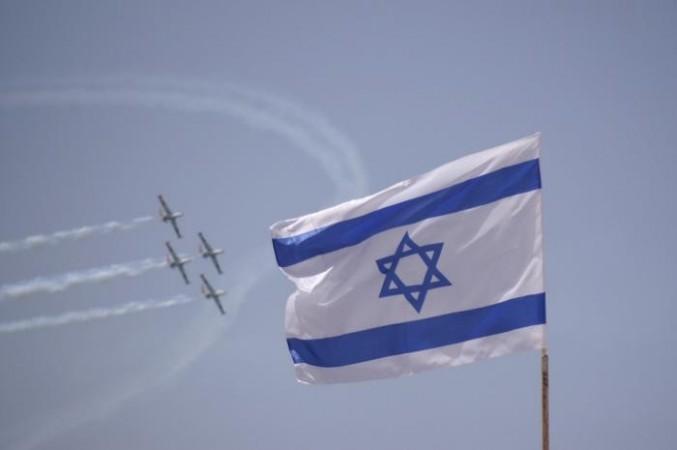
Yom Ha'atzmaut or Israel's Independence Day is celebrated on the fifth day of the month of Iyar, which is the Hebrew date of the formal establishment of the State of Israel when David Ben-Gurion, who was the first prime minister of Israel, publicly read the Declaration of Independence of Israel on May 14, 1948.
For 2014 Yom Ha'atzmaut falls on May 6.
Here are the top 10 essential facts about the day:
1. Yom Ha'atzmaut in Israel is always preceded by Yom Hazikaron, Israel's Memorial Day for the fallen soldiers. It is often argued that these two days are linked because Israelis owe their independence to the soldiers who scarified their lives for it.
2. Lavish celebration of the day is seen in Israel with solders carrying Israeli flags often forming shapes that represent Judaism, including a seven-branched candelabrum (Menorah) and a regular hexagram (Star of David) while the speaker of the Israeli parliament holds speech in a dramatic televised presentation.
3. Yom Ha'atzmaut is also widely celebrated by Jewish people who live outside of Israel. In the United States, for example, large festivals are organized by a number of Jewish communities including special synagogue services, dance events and more.
4. Israel's Independence Day is not celebrated by everyone. Some Jewish groups feel that the creation of the state of Israel was a sin. Additionally, many Arabs feel that the day (which they call 'al-Nakba', the disaster) represents a loss of national identity when the state was created.
5. The Idea about the state of Israel dates back long into history and is mostly attributed to the ideas of Theodor Herzl, a Jewish man born in Pest, now part of Budapest, Hungary. Considered to be an instrumental person in setting up the Zionist Organization and organizing the First Zionist Congress held in Basel, the man is known for campaigning relentlessly for a Jewish state in the Middle East.
6. Calls for an independent Jewish state were further intensified after the horrendous atrocities committed against Jewish people in Europe in the run up to and during World War II.
7. David Ben Gurion, the first prime minister of Israel publicly read the Declaration of Independence of Israel on May 14, 1948 and is known as Yom Ha'atzmaut. The day before Yom Ha'atzmaut is Yom Hazikaron officially known as "Israel's Day of Remembrance for Fallen Soldiers and Victims of Terrorism".
8. The Flag of Israel is considered to be the most important symbol for the Independence Day. The Star of David, or Megan David - the hexagram of blue colour - present in the flag is said to represent a Jewish prayer shawl, known as a tallit. It was reportedly introduced in 1897 as a symbol of the Zionist Organization at the First Zionist Congress.
9. According to some historical accounts, Jewish people of the earlier times used to colour threads or fringes of their prayer shawls using the dye called tekhelet - said to be obtained from a certain type of shellfish and gave a dark blue colour. Over time, it became common to weave blue or purple stripes into the edges of their prayer shawls - the same pattern seen in Israeli flag.
10. The use of blue hexagram to symbolize Jewish pride seems to have originated from the medieval times in Prague, now in Czech Republic, although not much is known about its origin.
[ED:VS]

















